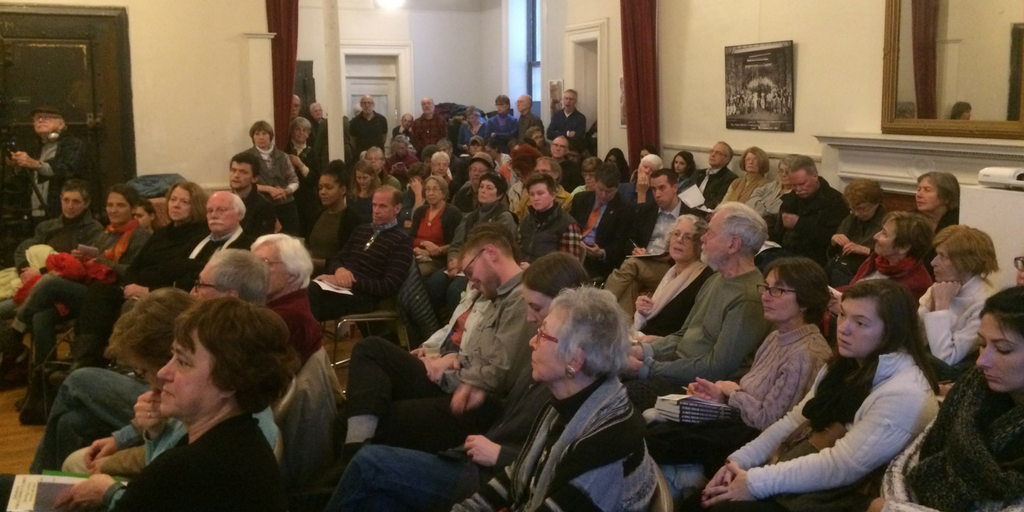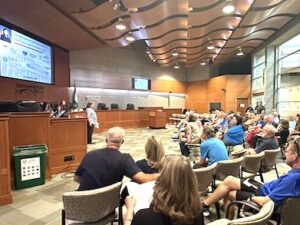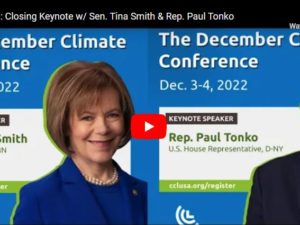
An audience of nearly 100 gathered in New York to learn about agriculture’s role in reducing carbon dioxide emissions.
By Mary Gable
Agriculture is an essential part of the climate change equation. Raising livestock, applying fertilizers, and turning forests into cropland are all linked to significant increases in greenhouse gas (GHG) emissions, not to mention air and water pollution and loss of biodiversity.
But farming can also be an important part of the solution. Through what’s known as carbon farming, growers can help reverse the effects of climate change by reducing emissions and storing excess carbon in the soil they use to grow crops.
According to a 2008 study by the Rodale Institute, organic farming practices including carbon sequestration could remove 7,000 pounds of CO2 per acre per year from the atmosphere. If all American cropland converted to this approach, the GHG reduction would be equivalent to removing almost 90 percent of the country’s cars.
It’s an opportunity too big to ignore—that’s why one CCL chapter is trying to raise awareness of the pivotal role agriculture has to play in reducing atmospheric GHGs. On January 29, CCL’s Columbia, New York chapter held an event to open a dialogue between CCL and the agriculture community and educate people about carbon farming’s potential. The featured speaker was Dr. Gary Kleppel, a farmer, professor of biology at SUNY Albany, and author of “The Emergent Agriculture: Farming, Sustainability and the Return of the Local Economy.” A panel discussion followed featuring local farmers and land management experts.

Dr. Gary Kleppel presents at the forum
Agriculture is an important driver of the New York state economy, so it’s not surprising that the event generated significant local buzz. It caught the attention of new Republican Congressman John Faso, who attended the forum along with his district director. Rep. Faso sits on the House Agriculture Committee, and CCL was pleased to see his interest in this climate-friendly practice that’s gaining momentum around the world.
Also in attendance was Kristin Williams, Legislative Director for New York Assemblywoman Didi Barrett. Williams announced that the assemblywoman will introduce a carbon farming tax credit for New York growers. This legislation, if passed, would create a new financial incentive for land management practices that improve soil health and reduce GHG emissions, making New York a leader in promoting new agricultural strategies that combat climate change.
“When people realize that our home—the planet—is on fire, everyone wants to be part of the ‘bucket brigade’ to put it out,” explains Jan Storm, CCL Outreach Coordinator and the organizer of the event. “Extinguishing the fire requires both eliminating the fuel—reducing carbon emissions via a price on carbon—and removing the fuel that’s already there.”
“That’s where carbon sequestration comes in. When you look at the problem this way, it’s easy to see why agriculture’s role is so important.”
The science behind carbon farming
Here’s how it works. When plants decompose, they add organic matter to soil, much of which is composed of carbon. The more carbon that stays in the ground, the less enters our atmosphere. Carbon also enters the ground through photosynthesis, as plants remove carbon dioxide from the air and transfer it to the soil via their roots.
Sequestering carbon helps the planet, and it also benefits farmers. It’s a way to achieve high yields without chemicals and promotes soil health. This is especially important in parts of the developing world, where soil degradation is both a cause and effect of climate change.
Through practices like using compost and organic mulch, avoiding tilling (which causes the soil to mix with air, allowing carbon to oxidize), planting cover crops and rotating herds of livestock, farmers can effectively maximize the amount of carbon that remains in the soil. And this doesn’t just create healthy cropland—it promotes food security.
One problem, several solutions
Given the accelerating impacts of the climate change crisis, no solution on its own is sufficient. A carbon price could work hand in hand with widespread incentives for carbon sequestration, decreasing the likelihood that more carbon will be added to the atmosphere while removing the carbon that’s already present.
When it comes to saving the climate, we’ve got a wildfire on our hands. Sequestering carbon in soil is an important way to help douse the flames.





